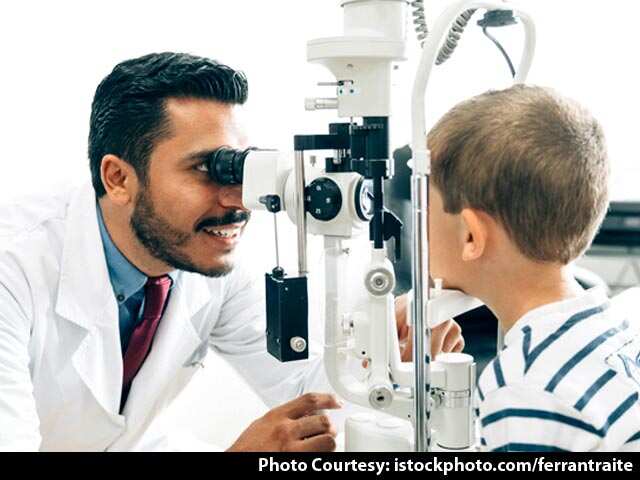The lazy eye or childhood eye is a condition in which one of your child's eyes does not develop in the way they should. Lazy eye, if left untreated, it can make the child's brain learn ignoring the image which comes from that eye.

Lazy eyes begin when eye of the child has better vision than the other
HIGHLIGHTS
- Parents should get eyesight of their children checked before school age
- Get an eye exam at 6 months, 3 years, and then every year when in school
- Treatment of lazy eyes includes forcing child's brain to use weak eye
The lazy eye or childhood eye is a condition in which one of your child's eyes does not develop in the way they should. Lazy eye, if left untreated, it can make the child's brain learn ignoring the image which comes from that eye. This can cause permanent damage to the vision. Also known as amblyopia, lazy eyes commonly begin when one of your child's eyes has better focus than the other. At times, one can be more farsighted than the other. When the child's brain gets both a blurry and clear vision, it tends to ignore the blurry one. Vision can get worse with time in case this process goes on for many years.
Diagnosis of lazy eye
It is important for parents to get eyesight of their children checked before school-age. It has to be ensured that nothing blocks the light which enters your child's eyes, that both eyes see equally well, and each eye moves in the way it should.

Lazy eyes can affect vision in the long run
Photo Credit: iStock
Also read: Low-Carb Diet May Improve Eyesight
You can visit a pediatric eye doctor in case you feel that something is wrong with your child's vision. Eye experts usually suggest that children should get an eye exam at 6 months, 3 years, and then every year while they are in school.
A condition like lazy eye is likely to run in families. In case this is the case, you child is likely to have a lazy eye. It has to be noted that one cannot just look at the child and say if s/he has lazy eyes. Early diagnosis and treatment is the key to treat lazy eyes.
Also read: This Is What Your Eyes, Skin And Hair Tell About Your Health
Treatment of lazy eyes
A common treatment of lazy eyes is to force your child's brain to use the weak eye. The doctor usually corrects any underlying problems in the eyes, like farsightedness or nearsightedness. Most children with lazy eyes need glasses for improving eye focus. In case there is blockage of light from eyes because of cataract, the doctor may recommend surgery for its removal.
In case of lazy eyes, eye drops are usually suggested. These eye drops blur the strong eye, so that your child doesn't need to wear an eye patch.
Also read: 5 Ways To Protect Your Child's Eyes
It becomes difficult to treat lazy eyes after 7 to 9 years of age. This is the reason why children must have they eye exams at an early age. You need to follow doctor's instructions about lazy eye treatment even if they seem difficult to follow. Seeing how your child reacts to eye patches or eye drops, your doctor will decide which one of them is better for lazy eye treatment.
Disclaimer: This content including advice provides generic information only. It is in no way a substitute for qualified medical opinion. Always consult a specialist or your own doctor for more information. NDTV does not claim responsibility for this information.
DoctorNDTV is the one stop site for all your health needs providing the most credible health information, health news and tips with expert advice on healthy living, diet plans, informative videos etc. You can get the most relevant and accurate info you need about health problems like diabetes, cancer, pregnancy, HIV and AIDS, weight loss and many other lifestyle diseases. We have a panel of over 350 experts who help us develop content by giving their valuable inputs and bringing to us the latest in the world of healthcare.














